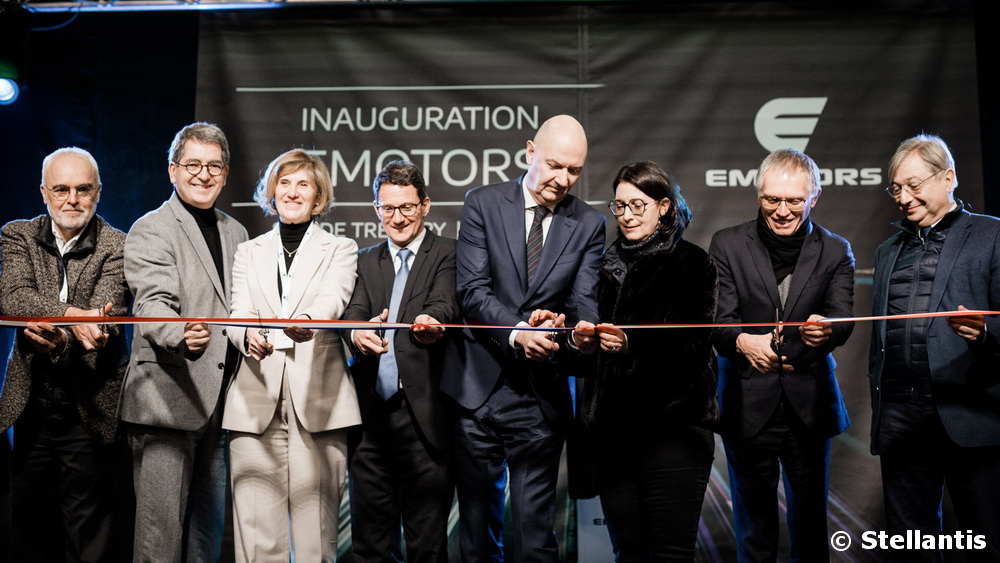Carlos Tavares’ industrial tour of Stellantis made a stop in Rennes, diving into the heart of the transformations taking place at one of the group’s historic factories. This journey aims to reassure production teams facing significant challenges, demonstrating Stellantis’s commitment to adapting its production in a rapidly evolving automotive market. During his visit to the La Janais factory, Tavares highlighted the importance of launching the new model, the Citroën C5 Aircross, in electric version, with production planned for July 2025. By maintaining a direct dialogue with employees, he emphasizes the crucial commercial stakes for the future of this site and the entire group. The flexibility of the new multi-energy platform is becoming a major asset in capturing market share. While the factory has only produced this unique model, Tavares’ expectations are both high and filled with uncertainty, underscoring the importance of this presence in Brittany for Stellantis’s future.

Table des matières
ToggleCarlos Tavares: A Journey Through Stellantis Factories in Rennes
On November 18, Stellantis CEO Carlos Tavares continued his itinerary through the group’s factories by visiting the Rennes La Janais plant. This site symbolizes the electric future and the transformation of the French automotive industry. During his visit, Tavares once again emphasized the innovation and flexibility goals that underpin the group’s strategy in a changing automotive market.
A Strategic Production: The Citroën C5 Aircross
A highlight of the visit was the presentation of the production of the new electric model of the Citroën C5 Aircross, an innovative vehicle designed on the “STLA Medium” multi-energy platform, representing much more than just an aesthetic change. With significant competitive advantages, Tavares highlighted that this model aims to capture a market share that seeks sustainable mobility.
According to recent studies, the European electric vehicle market is experiencing a growth of +25% per year, making the C5 Aircross a vital project for Stellantis. Carlos Tavares announced production forecasts between 50,000 and 80,000 units per year. “The future of this factory,” he specified, “depends directly on the success of this model in the market.”
The Importance of the Economic and Industrial Context
At the heart of this dynamic is a complex economic environment. Factories like the one in Rennes face various major challenges due to strong competition, especially from electric vehicle manufacturers in China. An analysis of market trends reveals that in 2023, Stellantis is positioned as the third player in the electric car market in Europe, a figure that needs to be consolidated by the entire range of models.
To illustrate this reality, the Rennes factory has undergone an impressive transformation over the past decade. By reducing its area from 224 to 113 hectares, it has demonstrated an effective streamlining approach while investing €160 million to modernize itself. By 2025, the goal is to enhance this production capacity with new workshops suited to the needs of thermal and electric assembly.
This change is not limited to numbers. Employees have been trained in new technologies, adding value to their expertise. “This collective effort is the key to our future success,” stated a local CFDT representative. A notable initiative is the implementation of a new plastic injection process, a first for Stellantis in France, which requires advanced technical skills and a qualified workforce.
Prospects for Employees and the Future of the Factory
For the staff of the Rennes factory, management support and expansion projects are reassuring signs after years of uncertainty. The site’s optimization could lead to the creation of over 250 temporary positions by 2025, according to projections. Tavares, despite doubts about the commercial success of the C5 Aircross, has expressed his determination to support all employees in this transformation process.
In a context of high pressure regarding environmental responsibility, the Rennes factory is not only producing a flagship model but also demonstrating a commitment to sustainability goals. The internalization of the production of targeted components, such as plastic injection parts, helps reduce the CO2 emissions associated with their transport while providing better supply security.
It is important to note that the company does not rule out diversifying its model portfolio in the near future. Tavares has left the door open for potential new silhouettes at this site, heavily depending on public reception of the C5 Aircross, as a strategy to invigorate the site’s activities and ensure employment.
In summary, through visits like that of Carlos Tavares, Stellantis seems to be attentive to the concerns of its employees and the demands of the market. Every move is a mark of confidence in its teams and an expression of a future announced as promising, with production maintained until 2028, as revealed in various statements.

FAQ on Carlos Tavares’ Journey Through Stellantis Factories in Rennes
What are the expectations regarding the production of the Citroën C5 Aircross? Carlos Tavares hopes for an annual production between 50,000 and 80,000 vehicles, depending on the model’s commercial success.
What is the impact of the C5 Aircross on the Rennes factory? The C5 Aircross is the only model in production, and its commercial success is crucial for the site’s activity.
What are the changes related to the new multi-energy platform? This new system, capable of accommodating different types of engines, represents significant flexibility for the factory, especially in a sluggish market.
What are the consequences for the factory’s employees? The unions are concerned about the future with prospects of partial unemployment and the elimination of 250 temporary positions.
Are there expansion plans for the factory? Currently, there are no plans to launch a second silhouette, although opportunities could arise in the future.
What investments have been made for the factory? Stellantis has invested €160 million to modernize the assembly workshop and inaugurate new production spaces.
How has the factory evolved in terms of area? The factory has been compressed from 224 hectares in 2015 to 113 hectares today, with a goal of reaching 108 hectares.
What innovations have been recently implemented? A plastic injection workshop is being installed, allowing for the production of vital parts for the C5 Aircross, which were previously outsourced.
What are Stellantis’s production forecasts in France? Stellantis plans to maintain a production capacity of one million cars in France by the end of 2024.
“`





